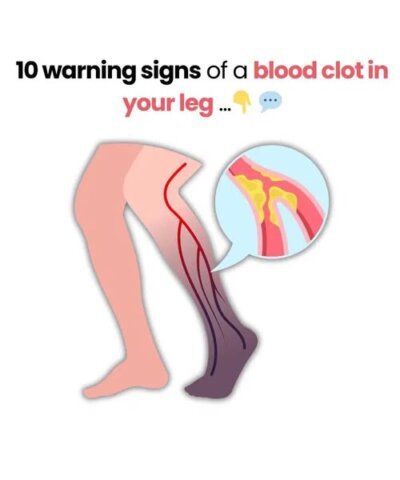
Top 10 signs of a BLOOD CLOT in your leg (prevent Deep Vein Thrombosis)
Deep vein thrombosis (DVT) occurs when a blood clot forms in the deep veins, typically in the legs, thighs, or pelvis. If part of the clot travels to the lungs, it can cause a life-threatening pulmonary embolism (PE).
Watch for these 10 warning signs:
- No Symptoms – Up to half of DVT cases have none until it’s too late.
- Fatigue – A clot can exhaust your body’s resources, causing persistent tiredness.
- Fainting – If blood flow is blocked, oxygen to the brain drops, leading to dizziness.
- Distended Veins – Swollen, rope-like veins may indicate a clot.
- Fever – A migrating clot may trigger fever, chills, and body aches.
- Increased Heart Rate – The body works harder to manage a clot.
- Tenderness – Pain or soreness in one leg could be a sign.
- Warm Skin – Heat and tingling around the clot is common.
- Redness – Red or discolored skin, especially post-surgery, should be checked.
- Inflammation – Swelling in the calf or thigh not relieved by home treatment.
One overlooked cause of DVT is high blood viscosity—thick blood that increases clot risk. To reduce it, eat omega-3s, stay hydrated, and avoid tight clothing or prolonged sitting. See a doctor if you notice symptoms. Early treatment with blood thinners can be life-saving.






